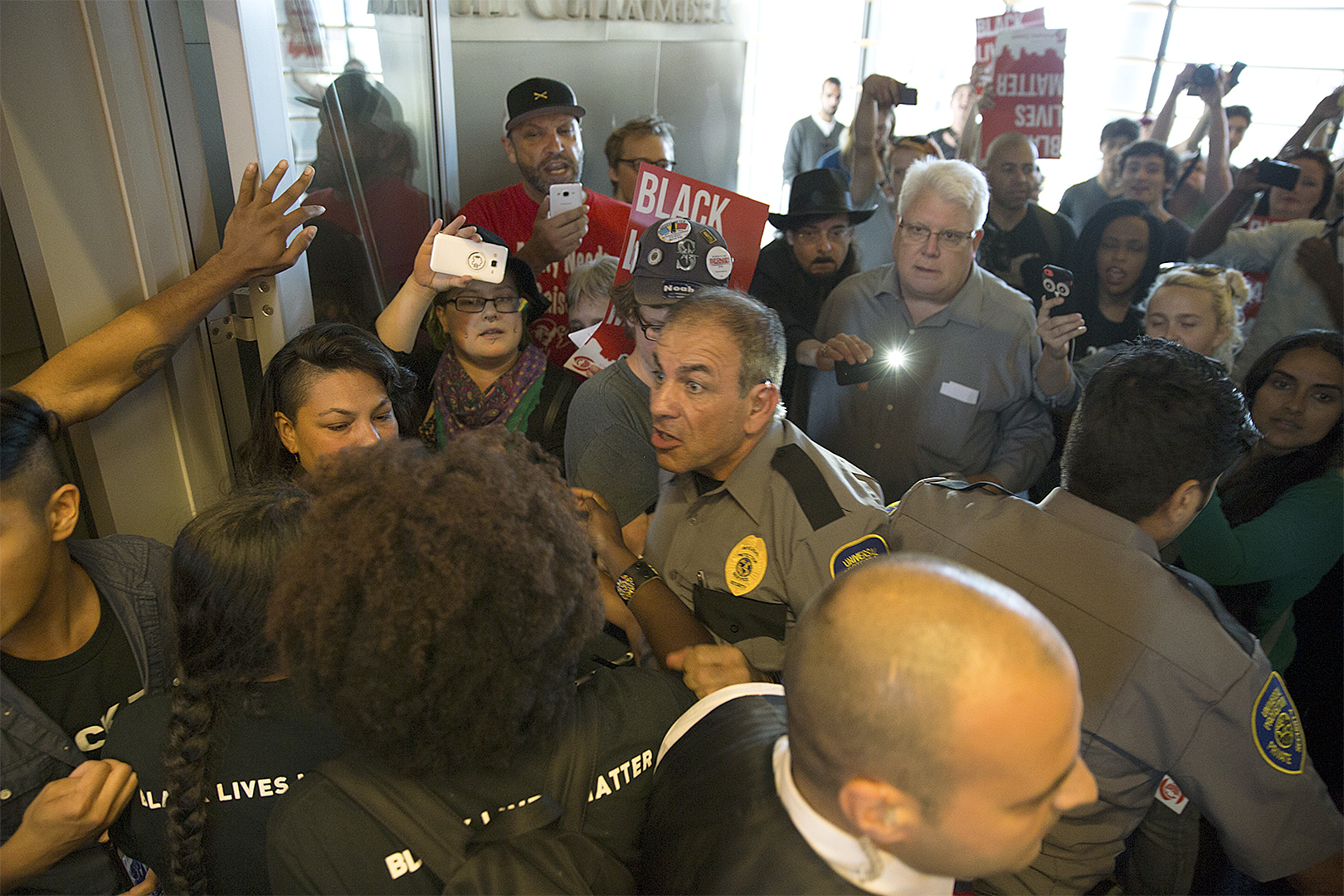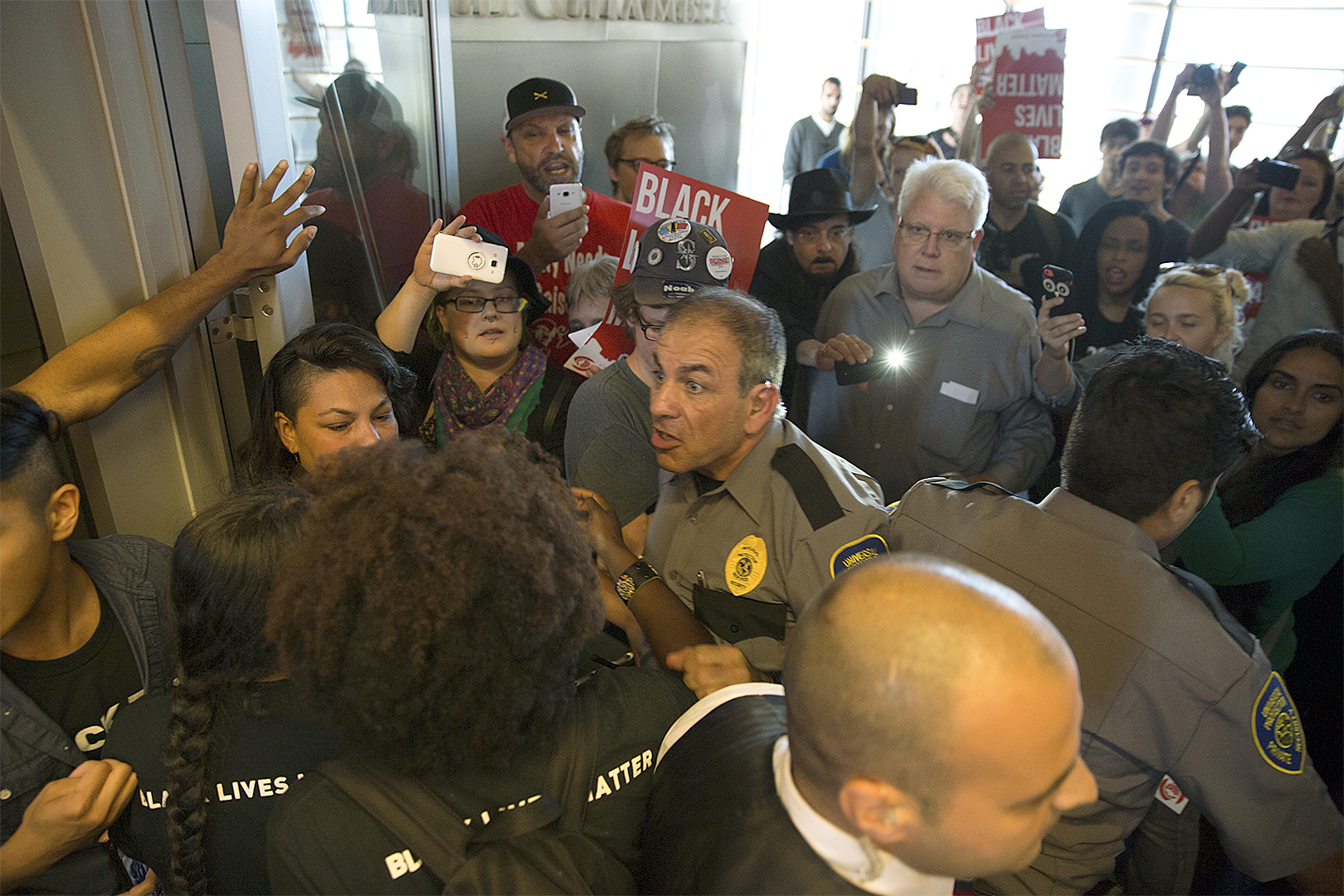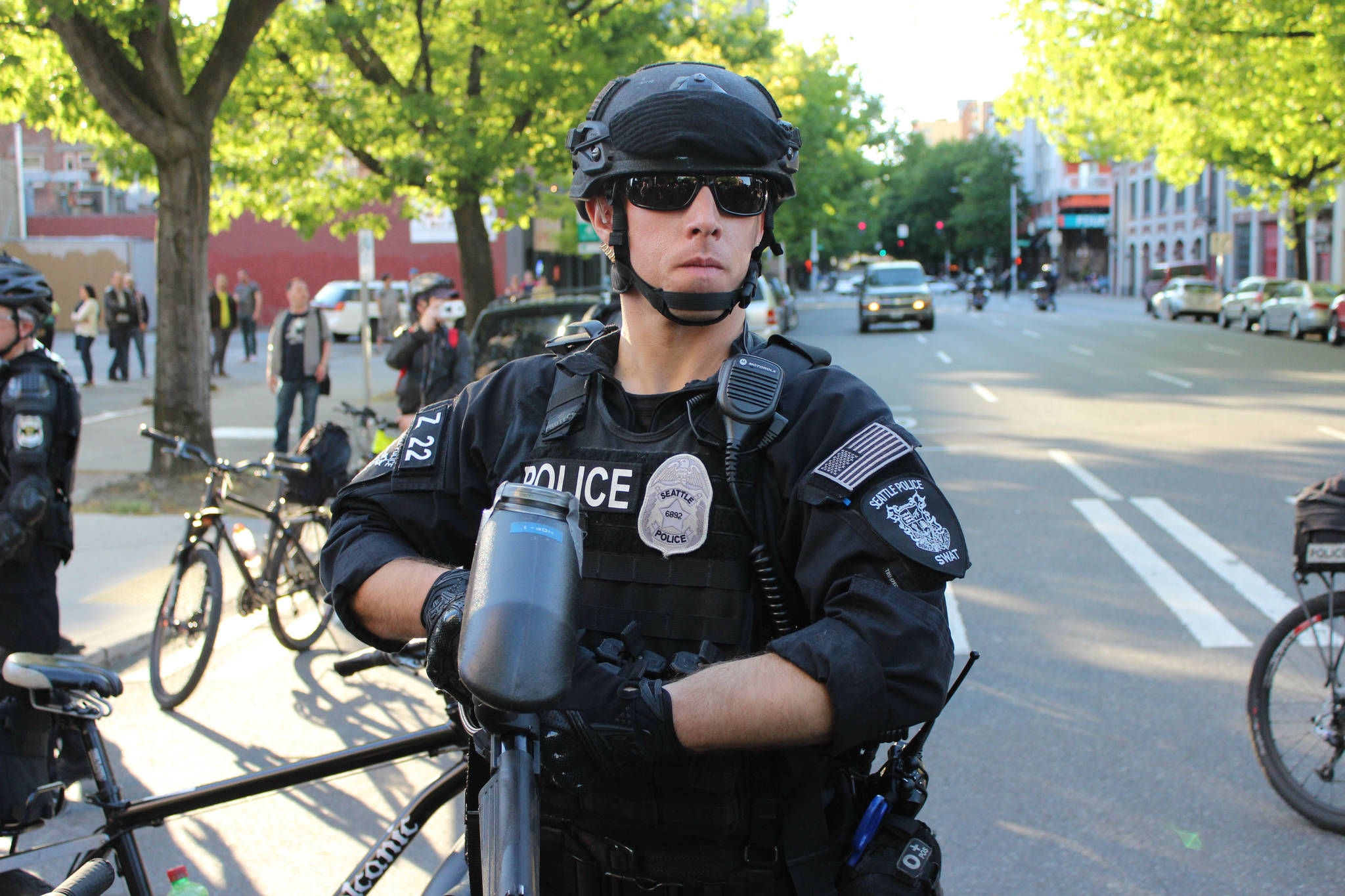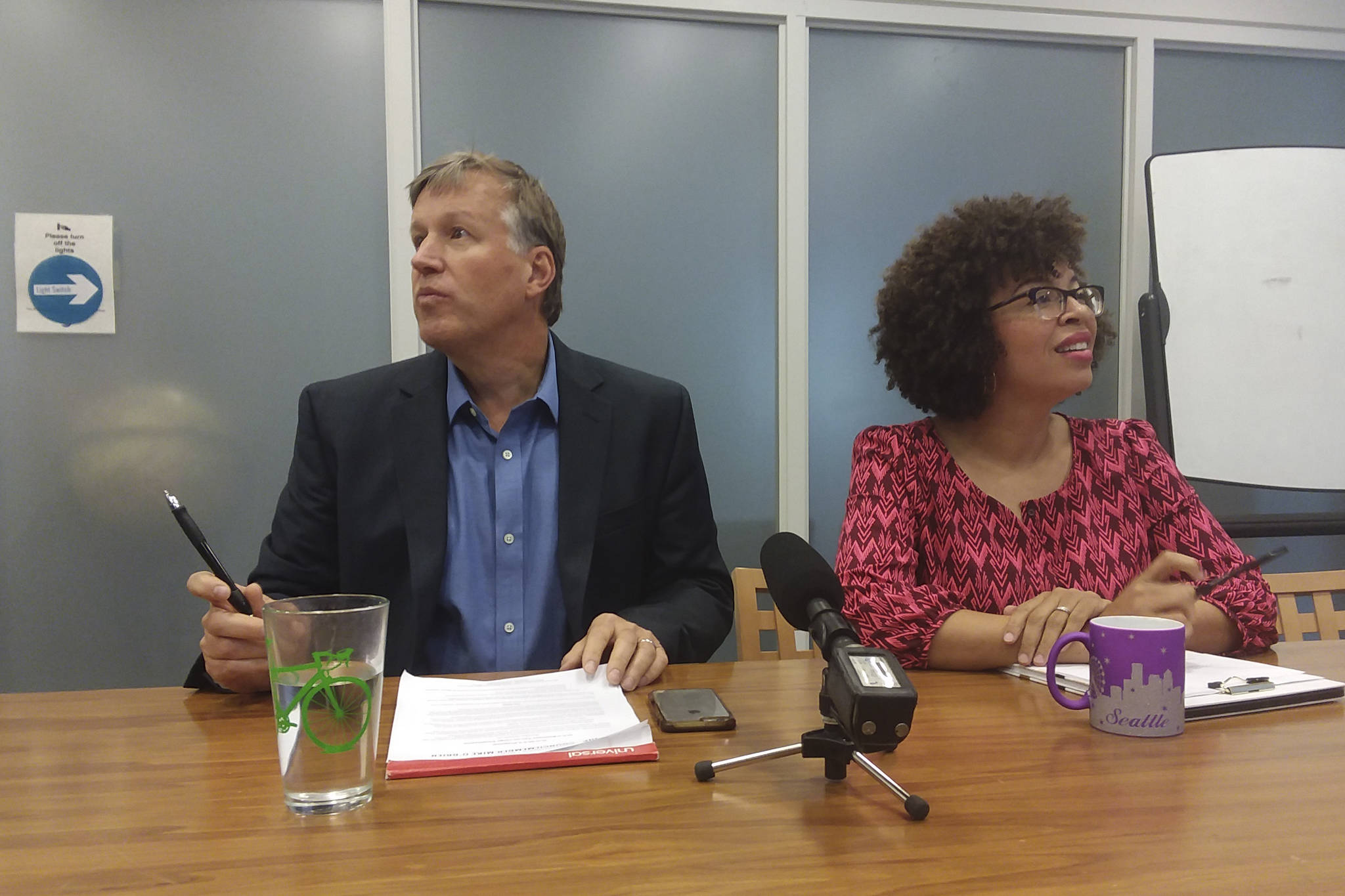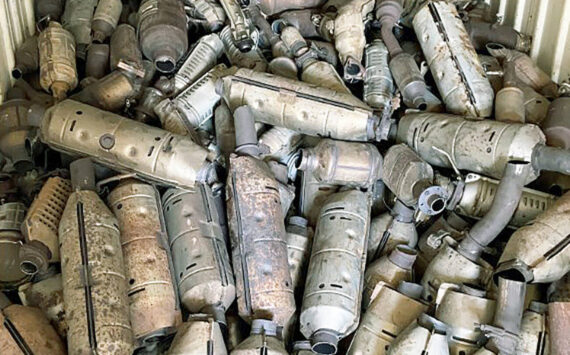Monday afternoon, Council chambers were packed to the gills and hot as an armpit as concerned, ornery citizens voiced their opposition to an expensive proposed new police building in north Seattle. So many people showed up to protest that City Hall security closed access to chambers and directed people downstairs into overflow seating. Anti-building protesters with cardboard signs stood on the sidewalk outside City Hall, waving to cars. Inside, during public testimony, citizens delivered one passionate speech against the project after another.
The main concern: race.
In a clear sign of the strained relationship between police and minorities today, what was once seen as a public infrastructure project in Bitter Lake has grown into a symbol of race in Seattle, a development that seems to ensure that its path to approval will be fraught.
The Council ultimately approved a resolution supporting the project in principle. In doing so, Council members tried to assuage the concerns of Black Lives Matter protesters—who have taken to calling the new building the “bunker” (because it would be earthquake- and bomb-resistant) and flooded Twitter with the #BlockTheBunker hashtag—by agreeing to study how the project will affect racial equity in the city. But no one in City Hall Monday believed that would stem the fierce criticism of the project, which one commenter went as far as to call “an investment in white supremacy.”
How did this happen? How did a rubber-stamp capital project become a reviled “bunker” and the target of a social-justice crusade?
As with any grassroots movement, there’s no one answer to the question. But looming large in the anti-building movement is fear of police violence, a charged and polarizing issue driven by Black Lives Matter activists. For many of them, any investment in police amounts to funding a paramilitary occupation, just as the county’s planned $210 million youth jail represents a capital investment in youth incarceration. Those concerns come in tandem with a nationwide social movement dedicated to radically revising, or perhaps eliminating, the institution of American police, tied to the steady stream of cell-phone videos showing police killing or brutalizing black people.
The racial overtones of the debate have clearly frustrated project supporters. In a sharp exchange with her colleague Mike O’Brien last week, Councilmember Debora Juarez, who supports the project and in whose district the station would be built, invoked her identity and history as a Native American woman as she argued the debate should not be about race. “This is a narrative about public safety,” she told O’Brien. “I will not allow another narrative to conflate here. I will not allow a politicization of anything more than that we’re replacing a police station.
“I don’t know about the rest of the world,” Juarez said, “but I am not afraid of a building. I’m not afraid of the people in the building.”
At another meeting, Juarez said: “I grew up in a community where police arrested us, where the only time they showed up was to apprehend. I also learned about it from being a public defender, a King County Superior Court judge, and working for two governors. So I’m not just spouting out political rhetoric to gain political points.”
Councilmember M. Lorena González, who also supports the project, has made a similar appeal, speaking of a cousin who she said was killed by police in California many years ago.
On Monday, Black Lives Matter protesters made it clear they weren’t convinced by the arguments.
Black Book Club organizer Palca Shibale meanwhile accused Juarez of “using identity politics to prop up police violence.” “Your identity politics do not go anywhere when it comes to supporting people of color, especially the indigenous community,” Shibale said. “You should be ashamed of yourself.”
Yet outside the racial critique of the project, its sheer cost—initially $88.5 million, then $160 million, and most recently $149 million—has made opposition multipartisan. Fiscal conservatives have lined up next to black radicals and together declared that $160 million, or anything close to it, is much too expensive for a police station. As commenter Omar Abdulalim said in June, “I’m not for the police not having a police station. Spend $20 million [on the new station], spend the rest on where it’s needed the most.”
Where is it needed the most? Commenters have floated a lot of ideas in the past two months, but one dominated: housing and homelessness.
Both Councilmembers Juarez and Tim Burgess objected when the Weekly asked them why the Council is spending money on police instead of housing, calling the question unfair and saying that the city should fund both—though they did not suggest specific ways to do so. “We have money set aside for [homelessness],” said Juarez, interviewed last week. “The way the city budget works, the way we raise money and the way we issue bonds, some money is restricted for capital projects, social services. You just have to make decisions sometimes. Yes, if I had a magic wand, I would say all $149 million could go to homelessness. But the world doesn’t work like that.”
But if that were on the table, you would vote yes? “I can’t. I can’t do that,” she said. “You’re trying to bring me into a false narrative, and I’m not going to bite. It’s like when people come in and say, ‘You’re not giving us money for mental health.’ I mean, we’re trying to do all of that within a budget and constraints.”
We pressed Burgess, pointing out that dozens of homeless people die in Seattle’s streets every year while only four Seattle police officers have been killed in the line of duty in the past 30 years. “False comparison,” he replied. “False dichotomy, and very inappropriate. If you extend the logic of your position there—should we disband the police department … because we want to divert that money to another good cause? I don’t think we have that luxury… . I don’t approach our budgeting or our public policy that way. We have to remain faithful to the city’s primary responsibility, which the city’s charter is very clear is public safety.”
By passing a resolution without a dollar figure, the City Council punted on the price tag for the North Precinct project. But come budget season in November, they’ll have to choose an actual dollar figure somewhere between $149 million and zilch. What that number is, or whether the Council punts again, depends largely on the protesters and activists whose outcry has already caused so much trouble for project proponents.
Mike O’Brien, the only dissenting vote against González’s resolution, explicitly credited Black Lives activists as changing his views. Responding to the criticism that he voted last year in favor of a city budget that included a $160 million North Precinct station, O’Brien said, “Things have changed since then.
“In light of the movement about Black Lives Matter that’s happening around this country, what the movement means to me is it’s calling on us to re-examine our assumptions. And the assumptions that I went into that [with] last year are different today.”
